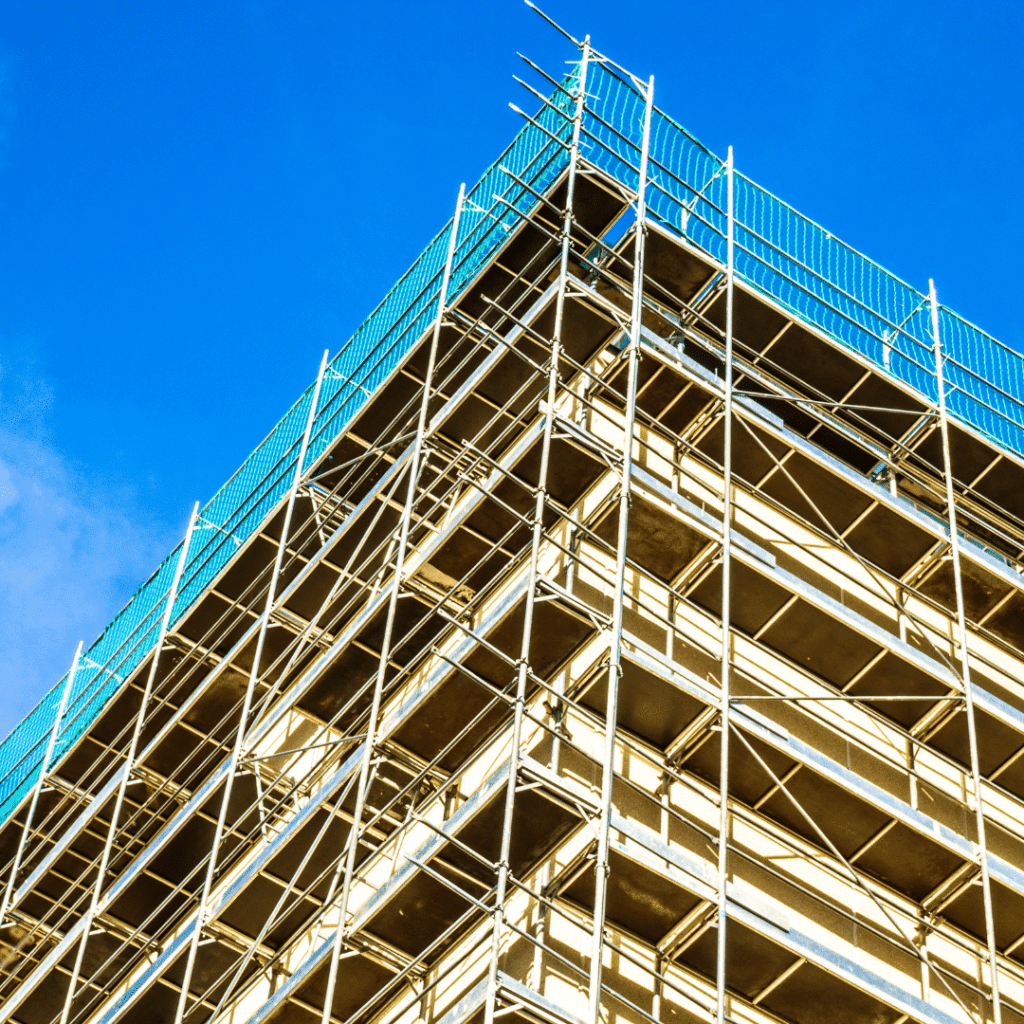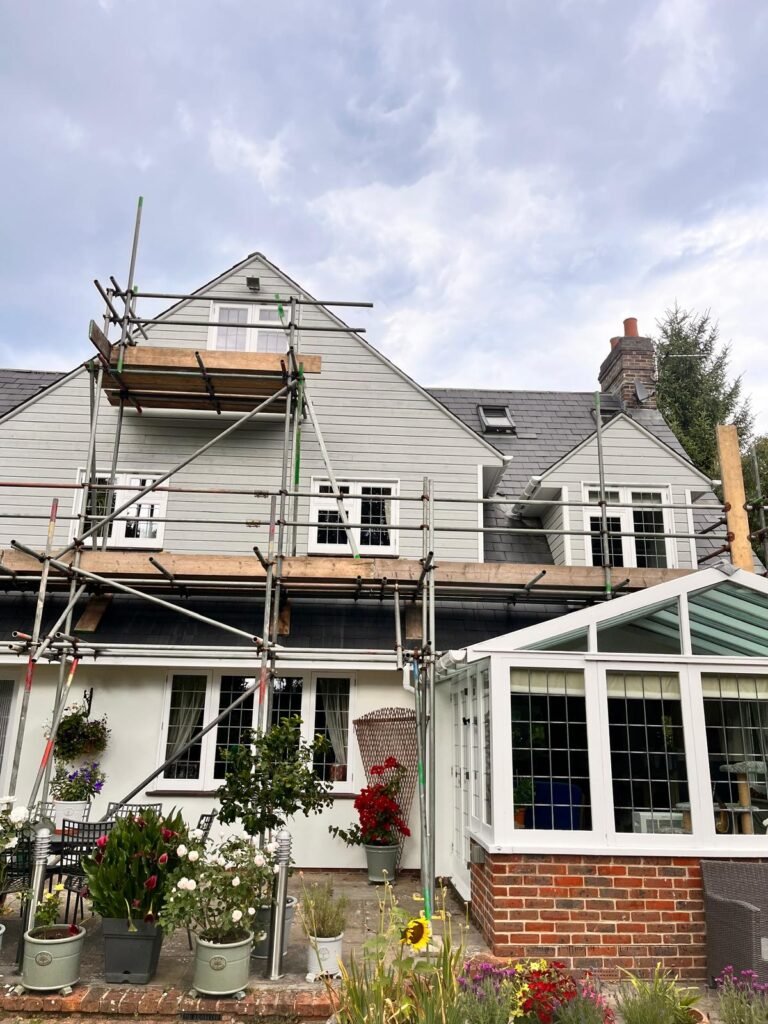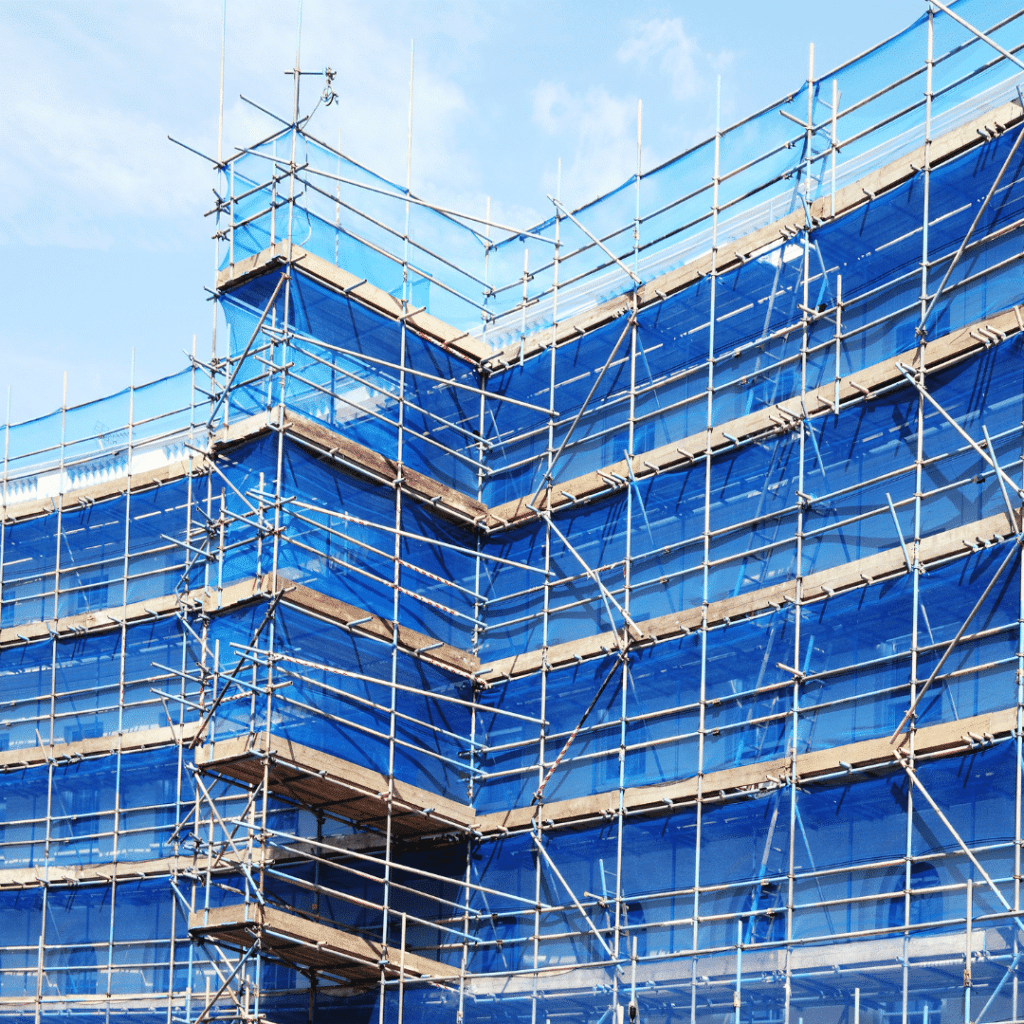Commercial vs Domestic Scaffolding: Key Differences Explained
When it comes to scaffolding, one size does not fit all. The requirements for a small domestic project are vastly different from those for a large-scale commercial building. Understanding these differences is essential to ensuring that your project is completed safely, efficiently, and on time. In this blog, we’ll explore the key distinctions between commercial scaffolding and domestic scaffolding, helping you choose the right scaffolding solution for your next project.
Scale and Complexity of Commercial vs Domestic Scaffolding
One of the main differences between commercial scaffolding and domestic scaffolding is the sheer size and complexity of the projects they support.
Commercial scaffolding is designed for large-scale projects such as office buildings, warehouses, and shopping centres. These structures often involve multiple storeys, larger construction teams, and heavier equipment. As a result, commercial scaffolding systems need to be robust enough to handle significant weight loads and provide ample space for workers and machinery.
In contrast, domestic scaffolding is typically used for smaller projects, such as home renovations, extensions, or exterior repairs. Domestic projects rarely involve the same height or structural complexity as commercial jobs, so the scaffolding required is lighter, simpler, and quicker to install. However, that doesn’t mean domestic scaffolding is any less important—it’s essential for ensuring the safety of tradespeople working on your property.

Scaffolding Safety and Regulations
Safety is paramount in any scaffolding project, but the level of scrutiny increases with commercial scaffolding due to the scale of the operations.
For commercial scaffolding, strict regulations govern the design, construction, and maintenance of scaffolding structures. Commercial sites often undergo regular inspections to ensure they meet industry standards and legal requirements. With larger crews and heavier materials involved, any failure in the scaffolding system could have catastrophic consequences. As such, commercial scaffolding companies, like us here at GRZLY Scaffolding, prioritise safety, employing highly trained professionals who understand the complexities of large-scale projects.
On the other hand, domestic scaffolding must also adhere to safety regulations, but the risks are usually lower given the smaller scale of the work. Nevertheless, ensuring that your domestic scaffolding provider is certified and complies with British safety standards is crucial for the protection of both workers and homeowners.
Materials Used in Commercial and Domestic Scaffolding
The materials used for scaffolding systems differ based on the project requirements.
Commercial scaffolding is typically constructed from heavier-duty materials, such as steel or aluminium, which provide the strength needed for high-rise buildings and large-scale constructions. These materials are durable and can withstand the weight of heavy machinery, multiple workers, and significant loads of construction materials.
In contrast, domestic scaffolding often uses lighter materials like aluminium. These scaffolding systems are easier to set up and dismantle, which is ideal for smaller jobs such as home repairs or roof maintenance. The lighter weight also reduces the cost of domestic scaffolding without compromising safety.

Customisation and Flexibility
Both commercial and domestic scaffolding need to be tailored to the specific needs of each project, but the degree of customisation varies.
Commercial scaffolding is highly adaptable and can be customised to accommodate complex architectural designs, multi-level construction sites, and a variety of environmental conditions. The design must take into account factors such as wind resistance, the load-bearing capacity required, and access points for workers and equipment. With commercial scaffolding, flexibility is key to ensuring that even the most complicated projects can proceed without delay.
On the other hand, domestic scaffolding is usually more straightforward. It may need to be adjusted to fit around the unique shape of a home or garden, but it typically doesn’t require the same level of engineering expertise as commercial scaffolding. However, for projects like loft conversions or large extensions, domestic scaffolding can still be tailored to ensure safety and accessibility.
Cost Differences Between Commercial and Domestic Scaffolding
As you might expect, the cost of scaffolding differs significantly between commercial and domestic projects.
Commercial scaffolding tends to be more expensive due to the size and complexity of the work involved. Larger structures require more materials, more labour, and longer installation times. Additionally, commercial scaffolding often requires specialist equipment, such as cranes or hoists, which can drive up the cost.
In contrast, domestic scaffolding is generally more affordable. Smaller projects require fewer materials and less labour, so the overall cost is lower. However, it’s important to remember that cutting corners on scaffolding can compromise safety. Hiring a reputable company like us, ensures that even the smallest project receives the highest level of care and attention.

Conclusion: Choosing the Right Scaffolding for Your Project
In summary, the key differences between commercial scaffolding and domestic scaffolding come down to the scale, complexity, and materials involved. Commercial scaffolding is designed for large-scale, multi-storey projects and requires heavy-duty materials and more customisation. On the other hand, domestic scaffolding is ideal for smaller jobs, such as home repairs or renovations, and offers a more cost-effective and flexible solution.
Whether you’re tackling a commercial or domestic project, it’s essential to choose a scaffolding provider that understands the unique requirements of your job. We have extensive experience in both commercial and domestic scaffolding, ensuring that every project—no matter how big or small—is completed safely and efficiently. So, the next time you’re planning a construction project, remember: not all scaffolding is the same, and choosing the right one could make all the difference.
